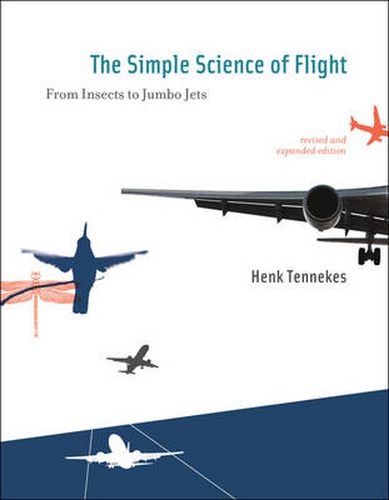Readings Newsletter
Become a Readings Member to make your shopping experience even easier.
Sign in or sign up for free!
You’re not far away from qualifying for FREE standard shipping within Australia
You’ve qualified for FREE standard shipping within Australia
The cart is loading…






From the smallest gnat to the largest aircraft, all things that\nfly obey the same aerodynamic principles. In The Simple Science of\nFlight, Henk Tennekes investigates just how machines and creatures\nfly: what size wings they need, how much energy is required for\ntheir journeys, how they cross deserts and oceans, how they take\noff, climb, and soar. Fascinated by the similarities between nature\nand technology, Tennekes offers an introduction to flight that\nteaches by association. Swans and Boeings differ in numerous ways,\nbut they follow the same aerodynamic principles. Biological\nevolution and its technical counterpart exhibit exciting parallels.\nWhat makes some airplanes successful and others misfits? Why does\nthe Boeing 747 endure but the Concorde now seem a fluke? Tennekes\nexplains the science of flight through comparisons, examples,\nequations, and anecdotes. The new edition of this popular book has\nbeen thoroughly revised and much expanded. Highlights of the new\nmaterial include a description of the incredible performance of\nbar-tailed godwits (7,000 miles nonstop from Alaska to New\nZealand), an analysis of the convergence of modern jetliners (from\nboth Boeing and Airbus), a discussion of the metabolization of\nenergy featuring Lance Armstrong, a novel treatment of the\naerodynamics of drag and trailing vortices, and an emphasis\nthroughout on evolution, in nature and in engineering. Tennekes\ndraws on new evidence on bird migration, new wind-tunnel studies,\nand data on new airliners. And his analysis of the relative\nefficiency of planes, trains, and automobiles is newly relevant.\n(On a cost-per-seat scale, a 747 is more efficient than a passenger\ncar.)
\n\n
$9.00 standard shipping within Australia
FREE standard shipping within Australia for orders over $100.00
Express & International shipping calculated at checkout
From the smallest gnat to the largest aircraft, all things that\nfly obey the same aerodynamic principles. In The Simple Science of\nFlight, Henk Tennekes investigates just how machines and creatures\nfly: what size wings they need, how much energy is required for\ntheir journeys, how they cross deserts and oceans, how they take\noff, climb, and soar. Fascinated by the similarities between nature\nand technology, Tennekes offers an introduction to flight that\nteaches by association. Swans and Boeings differ in numerous ways,\nbut they follow the same aerodynamic principles. Biological\nevolution and its technical counterpart exhibit exciting parallels.\nWhat makes some airplanes successful and others misfits? Why does\nthe Boeing 747 endure but the Concorde now seem a fluke? Tennekes\nexplains the science of flight through comparisons, examples,\nequations, and anecdotes. The new edition of this popular book has\nbeen thoroughly revised and much expanded. Highlights of the new\nmaterial include a description of the incredible performance of\nbar-tailed godwits (7,000 miles nonstop from Alaska to New\nZealand), an analysis of the convergence of modern jetliners (from\nboth Boeing and Airbus), a discussion of the metabolization of\nenergy featuring Lance Armstrong, a novel treatment of the\naerodynamics of drag and trailing vortices, and an emphasis\nthroughout on evolution, in nature and in engineering. Tennekes\ndraws on new evidence on bird migration, new wind-tunnel studies,\nand data on new airliners. And his analysis of the relative\nefficiency of planes, trains, and automobiles is newly relevant.\n(On a cost-per-seat scale, a 747 is more efficient than a passenger\ncar.)
\n\n